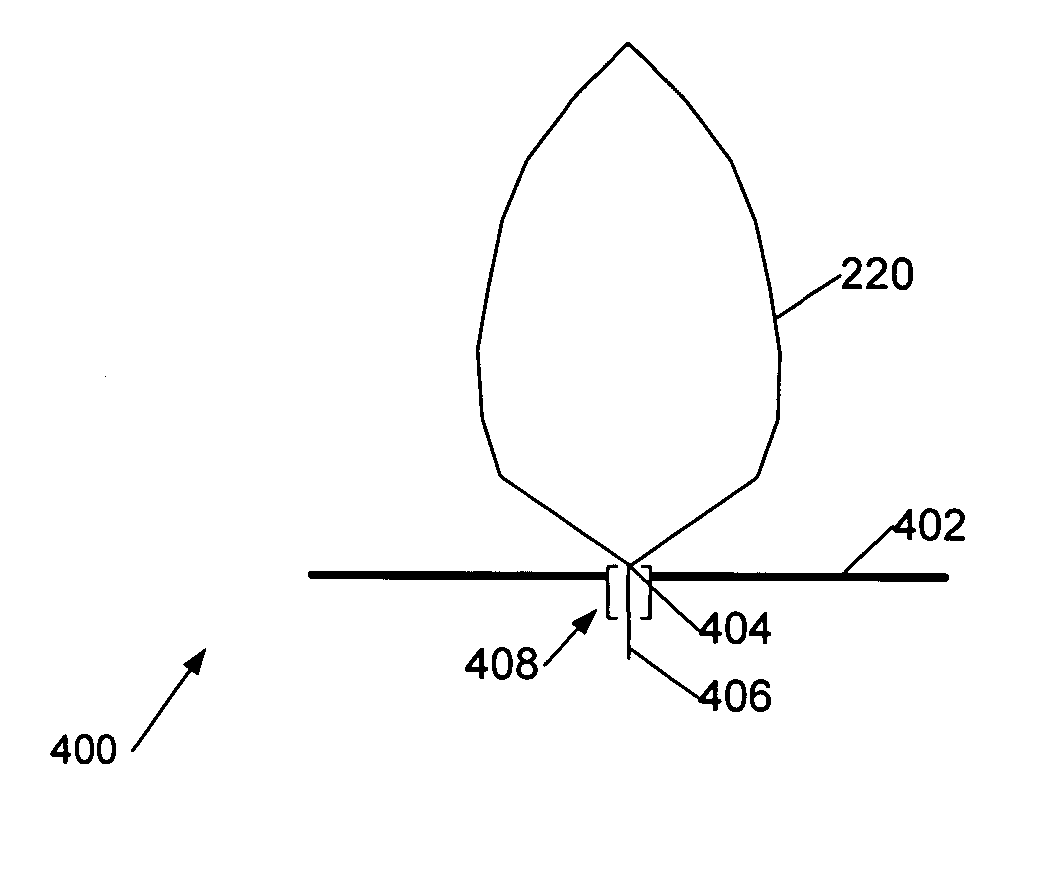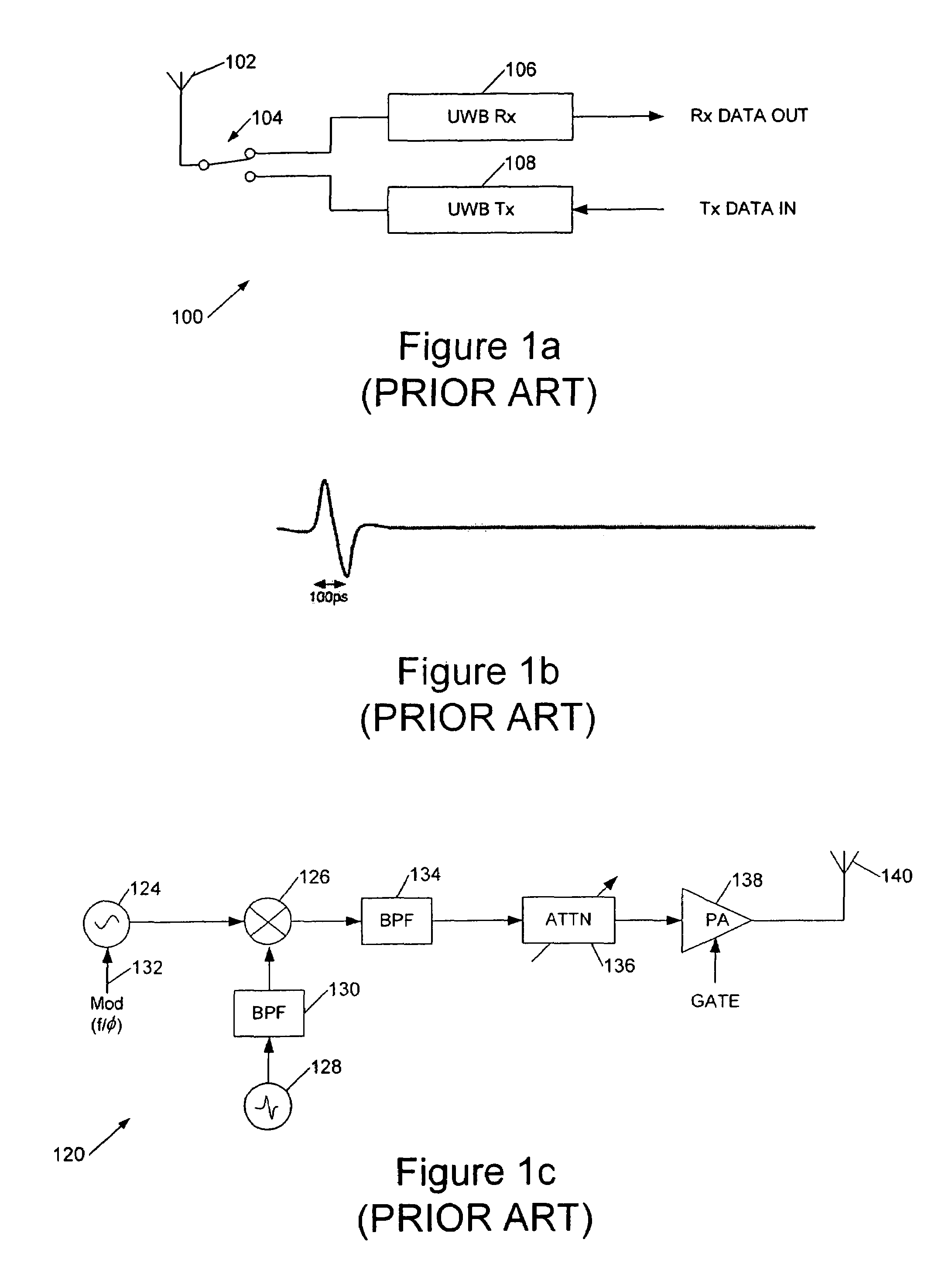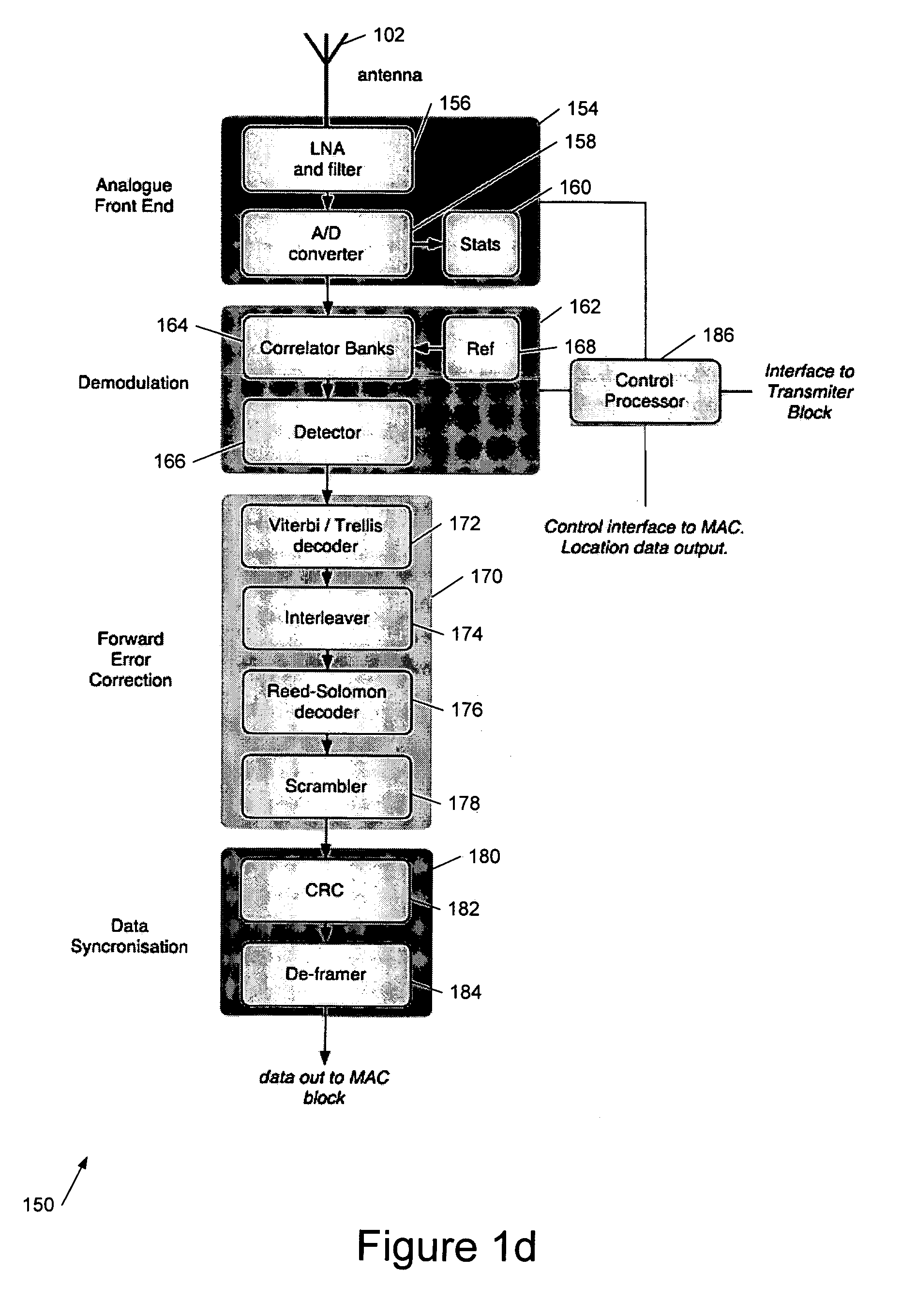Ultrawideband antenna
a wideband antenna and ultra-wideband technology, applied in the field of wideband antennas, can solve the problems of insufficient broadband frequency response, causing time/phase dispersion, and relatively unsusceptible uwb communications systems to multi-path effects, and achieve the effect of improving the structure of electromagnetic antennas
- Summary
- Abstract
- Description
- Claims
- Application Information
AI Technical Summary
Benefits of technology
Problems solved by technology
Method used
Image
Examples
Embodiment Construction
[0082]Referring now to FIG. 2a, this shows, diagrammatically, a set of quarter wave resonant elements 200a-200h together with their respective frequency responses 202a-202h. As can be seen the frequency responses overlap to, in theory, provide a substantially flat response over a wide bandwidth. FIG. 2b illustrates how these resonant elements may be combined in practice, using a common feed point 204. However, the arrangement of FIG. 2b has angular response and polarisation which is a function of frequency, and this is addressed by combining two sets of elements in a symmetric structure 210 as shown in FIG. 2c.
[0083]The way in which the structure of FIG. 2c works can be explained with reference to FIG. 2d, which shows a pair of current of equal magnitude which sum to give a resultant vector along line 214 bisecting the angle between vectors 212a and 212b. In the structure of FIG. 2c each element apart from the central element 202 is paired, elements of a pair lying at equal angles ...
PUM
 Login to View More
Login to View More Abstract
Description
Claims
Application Information
 Login to View More
Login to View More - R&D
- Intellectual Property
- Life Sciences
- Materials
- Tech Scout
- Unparalleled Data Quality
- Higher Quality Content
- 60% Fewer Hallucinations
Browse by: Latest US Patents, China's latest patents, Technical Efficacy Thesaurus, Application Domain, Technology Topic, Popular Technical Reports.
© 2025 PatSnap. All rights reserved.Legal|Privacy policy|Modern Slavery Act Transparency Statement|Sitemap|About US| Contact US: help@patsnap.com



